Introduction
The global door lever handle market has undergone significant transformation over the years. Initially seen as a functional hardware item, the door lever handle has evolved into a key component of interior and architectural design. From residential homes to commercial buildings and industrial facilities, lever handles offer both utility and style.
With the increasing urbanization of emerging markets, the integration of smart home technology, and consumer demand for high-quality materials, the market is poised for steady growth in the coming years. This blog will explore the current state of the door lever handle market, its segmentation, key trends, opportunities, challenges, and future outlook.
Door Lever Handle Market Overview
Market Size and Growth
The door lever handle market is projected to grow at a compound annual growth rate (CAGR) of 4%-6% between 2024 and 2029. By 2029, the market is expected to reach an estimated USD 12 billion in value. This growth is primarily driven by increasing construction activities, the expansion of the home improvement industry, and the rising adoption of smart technology in buildings.
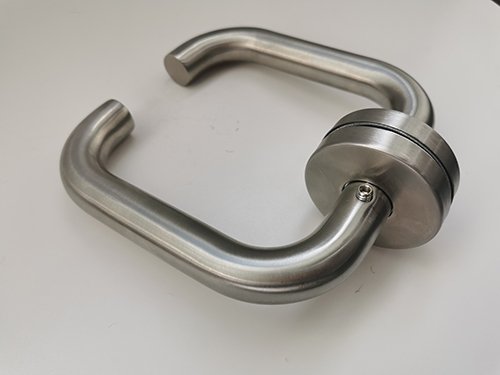
Key Drivers of Growth
1. Urbanization and Infrastructure Development
• Rapid urbanization, particularly in developing economies, has led to an increase in residential and commercial construction projects.
• Governments are investing in infrastructure, driving demand for durable and stylish hardware like door lever handles.
2. Rise in Smart Homes and Offices
• The adoption of smart home technology has increased the demand for advanced lever handles, such as electronic or biometric models.
3. Aesthetic and Functional Appeal
• Consumers now prioritize door hardware that complements their interior design while offering functionality and durability.
Door Lever Handle Market Segmentation
The door lever handle market is segmented into four primary categories: material, application, style, and region. Each segment plays a vital role in determining market trends, consumer preferences, and overall industry dynamics. Let’s explore each category in detail:
By Material
The material used in door lever handles greatly influences their durability, functionality, and aesthetics. Manufacturers cater to various market needs by offering diverse material options:
a. Stainless Steel Door Lever Handle
Stainless steel door lever handle dominates the market due to its unmatched durability and corrosion resistance.
• Applications: Popular in public and commercial spaces like hospitals, offices, and educational institutions because of its hygienic and sturdy properties.
• Advantages: Easy to maintain, highly resistant to rust, and available in multiple finishes such as brushed, matte, and polished chrome.
• Market Trends: Growing demand for matte black stainless steel handles, especially in modern architectural designs.
.webp)
b. Brass Door Lever Handle
Brass lever door handles remain a favorite for their timeless appeal and natural antimicrobial properties.
• Applications: Luxury hotels, heritage buildings, and upscale residences often prefer brass for its warm tones and vintage aesthetics.
• Advantages: Highly customizable, available in finishes such as antique brass, satin brass, and polished brass.
• Market Trends: A resurgence of demand in high-end and classical designs for heritage restoration projects.
c. Aluminum Lever handle
Lightweight and cost-effective, aluminum is a popular choice for residential and budget-conscious applications.
• Applications: Commonly used in apartments, affordable housing projects, and interior doors.
• Advantages: Anodized aluminum finishes enhance resistance to corrosion and wear, making it ideal for everyday use.
• Market Trends: Rising demand in developing regions due to its affordability and availability.
d. Zinc Alloy morden door lever
Zinc alloy balances cost and quality, making it a preferred choice for mid-range lever handles.
• Applications: Frequently found in residential and commercial projects that prioritize both functionality and design.
• Advantages: Strong yet moldable, allowing for intricate and stylish designs at a reasonable price point.

e. Glass and Wood
These materials cater to niche markets and designer applications.
• Applications: Custom projects, boutique hotels, and modern interior designs.
• Advantages: Glass offers a contemporary look, while wood adds warmth and natural appeal to interiors.
• Market Trends: Increasing use of sustainable wood and decorative glass handles in eco-conscious projects.
2. Applications of Door Lever Handle
The versatility of door lever handles allows them to serve a wide range of applications. This segmentation highlights the different industries and environments where these products excel.
a. Residential
Residential applications form a significant portion of the market, driven by new housing developments and renovation projects.
• Key Features: Homeowners seek ergonomic designs, ease of installation, and a balance of affordability and style.
• Popular Styles: Sleek and modern designs in finishes like satin nickel, matte black, or brushed chrome dominate.
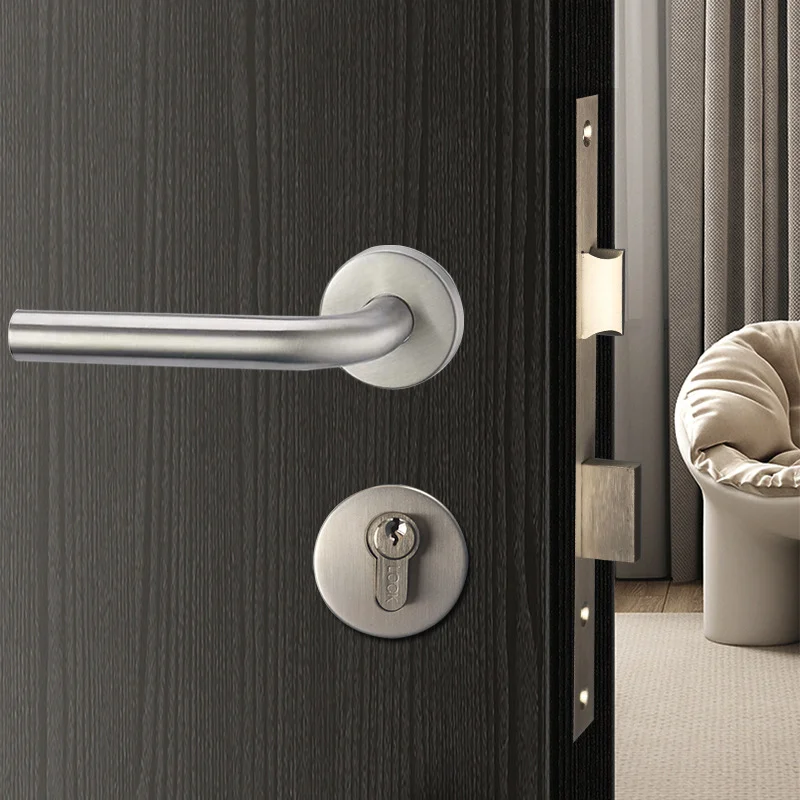
b. Commercial
The commercial segment includes offices, retail stores, healthcare facilities, and educational institutions.
• Key Features: Handles in this category focus on high durability, fire safety compliance, and accessibility.
• Popular Features: ADA-compliant designs, antibacterial coatings, and fire-rated materials.
c. Door Lever handle used in Industrial
Industrial environments require robust and functional handles capable of withstanding harsh conditions.
• Key Features: Heavy-duty materials like stainless steel are essential for durability and security.
• Emerging Trends: Increased use of lever handles with specialized coatings to resist moisture, chemicals, and extreme temperatures.
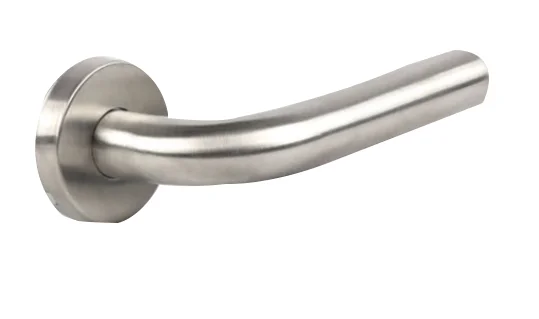
d. Hospitality
Hotels and resorts prioritize lever handles that combine security, design, and ease of use.
• Key Features: Custom finishes and electronic access control systems for guest convenience.
• Popular Designs: Brass or stainless steel handles with polished or satin finishes complement luxury interiors.
3.Door Lever Handle Styles
As aesthetics play a growing role in consumer decisions, the style of door lever handles has become a crucial market segment.
a. Traditional Styles
These handles offer ornate designs and timeless appeal.
• Key Features: Often crafted from brass or bronze with intricate detailing and antique finishes.
• Market Trends: Increasing popularity in restoration projects and luxury homes.
b. Modern and Minimalistic Styles
Modern designs emphasize clean lines and functionality.
• Key Features: Made from materials like stainless steel or aluminum, featuring slim profiles and matte finishes.
• Market Trends: Dominance of matte black and brushed nickel finishes in contemporary settings.
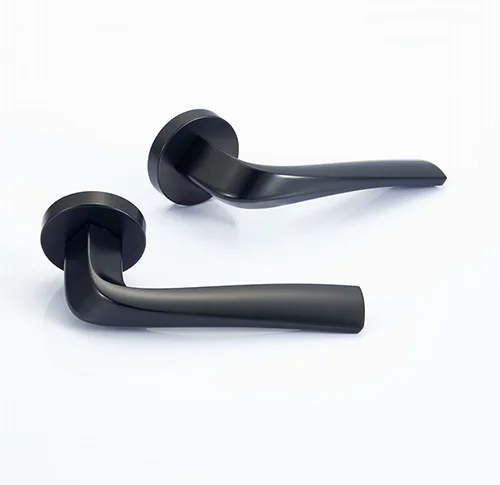
c. Smart Lever Handles
The rise of smart homes has led to growing demand for technologically advanced lever handles.
• Key Features: Integration with biometric systems, keypad entry, and smartphone connectivity.
• Market Trends: High adoption rates in urban markets, with growing awareness in suburban areas.
4.Door Lever Handle Region Segmentation
Geographical segmentation reveals the demand for door lever handles across various markets, influenced by economic conditions, construction activity, and cultural preferences.
a. North America
• Key Characteristics: High adoption of smart technology and premium finishes.
• Market Drivers: Robust construction activity, renovation projects, and demand for advanced security features.
• Popular Products: Smart lever handles with biometric and Wi-Fi-enabled systems
b. Europe
• Key Characteristics: Focus on sustainability and high-quality materials.
• Market Drivers: Stringent environmental regulations and strong demand for brass and antique finishes.
• Popular Products: Brass door lever handles with traditional designs.
c. Asia-Pacific
• Key Characteristics: Rapid urbanization and a rising middle-class population drive demand.
• Market Drivers: Growth in residential and commercial construction, particularly in China and India.
• Popular Products: Affordable stainless steel and aluminum handles.
d. Middle East and Africa
• Key Characteristics: Demand for high-end and durable products in luxury and infrastructure projects.
• Market Drivers: Increased spending on hospitality and tourism infrastructure.
• Popular Products: Gold-plated and customized designer handles.
e. South America
• Key Characteristics: Emerging market with increasing awareness of modern designs.
• Market Drivers: Expansion in real estate and commercial construction.
• Popular Products: Cost-effective zinc alloy and aluminum handles.
Market Trends of Door Lever Handle
Several key trends are shaping the future of the door lever handle market:
1.Growing Preference for Stainless Steel
Stainless steel lever handles are increasingly popular due to their durability, rust resistance, and sleek aesthetic. They are widely used in both residential and commercial settings, particularly in high-traffic areas.
2.Integration of Smart Technology
Smart lever handles with features such as fingerprint recognition, app control, and remote unlocking are gaining traction. These handles cater to the demand for security and convenience in both residential and commercial applications.
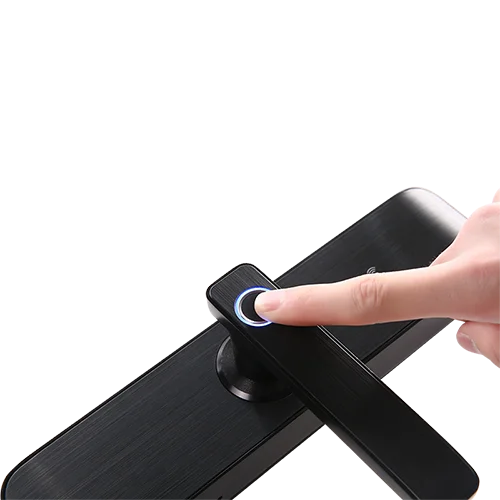
3.Sustainability in Materials
Manufacturers are focusing on eco-friendly materials and production methods, aligning with global sustainability goals. Recyclable and low-impact materials are becoming a priority for many brands.
4.Innovations for Accessibility
Lever handles are being designed with accessibility in mind, making them easier to use for people with disabilities. These designs also ensure compliance with global accessibility standards.
5.Customization
Consumers increasingly seek personalized solutions, driving demand for lever handles in unique finishes like matte black, antique bronze, and polished gold.
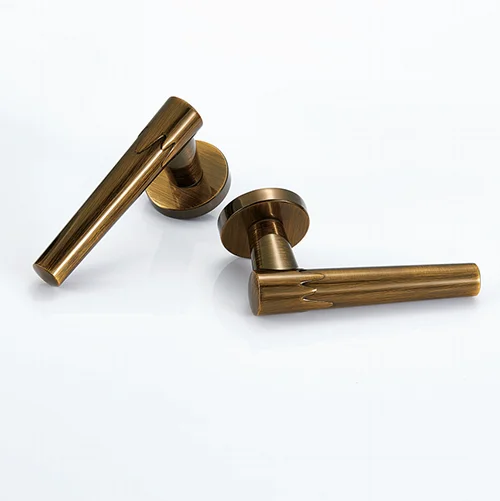
Market Opportunities
The door lever handle market offers several lucrative opportunities for stakeholders:
1.Emerging Markets
Regions such as Asia-Pacific, the Middle East, and Africa are experiencing rapid urbanization, offering significant growth potential. These regions are investing heavily in residential and commercial infrastructure.
2.Luxury Construction Projects
High-end construction projects in urban centers demand premium-quality lever handles with unique designs and materials.
3.E-commerce Expansion
The rise of e-commerce has made it easier for manufacturers and wholesalers to reach global markets. Offering customizable options and direct-to-consumer sales can further boost growth.
4.Smart Cities and IoT Integration
As smart cities expand, the demand for smart lever handles with IoT capabilities will increase, creating opportunities for manufacturers who embrace technology.
Market Challenges
Despite its growth potential, the door lever handle market faces several challenges:
1.Intense Competition
The market is highly competitive, with manufacturers vying for market share through innovation and price reductions. Maintaining profitability while ensuring quality can be difficult.
2.Raw Material Costs
Fluctuations in the cost and availability of materials like stainless steel and brass can impact production timelines and pricing.
3.Regulatory Compliance
Manufacturers must comply with regional standards, including fire safety and accessibility regulations. This adds complexity to design and production processes.
4.Consumer Awareness of Smart Handles
While smart handles are a growing trend, many consumers are still unfamiliar with their benefits, slowing adoption in certain markets.
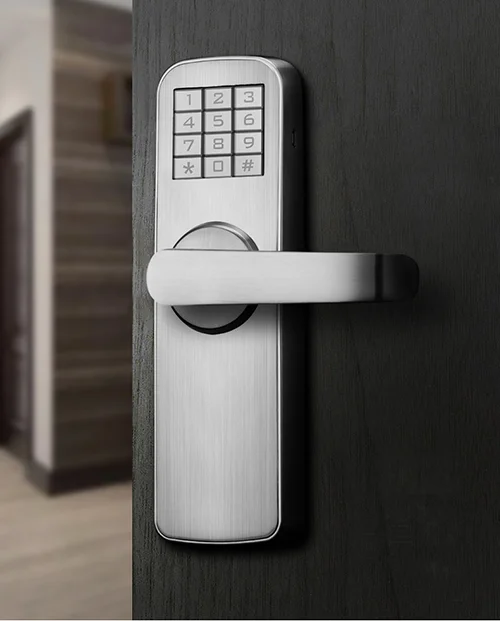
Future Outlook
The door lever handle market is expected to continue its steady growth, driven by technological advancements and evolving consumer preferences. Key predictions include:
1. Increased Adoption of Smart Technology
• Smart lever handles will dominate the market as technology becomes more accessible and affordable.
2. Focus on Sustainability
• Eco-friendly materials and manufacturing practices will become standard, catering to environmentally conscious consumers.
3. Global Expansion
• Companies will expand their presence in emerging markets, capitalizing on infrastructure development and rising disposable income.
4. Customization as a Standard Offering
• Personalized solutions will become the norm, with manufacturers offering a wide range of styles, finishes, and features to meet diverse consumer needs.
Conclusion
The door lever handle market is evolving rapidly, offering immense opportunities for growth and innovation. With rising demand for smart solutions, sustainable materials, and stylish designs, the future of this market looks promising. However, stakeholders must navigate challenges such as competition, regulatory compliance, and supply chain issues to remain competitive.
For wholesalers and importers looking to capitalize on this growing market, partnering with a trusted supplier is essential. At Estar Hardware, we specialize in high-quality stainless steel door lever handles that blend functionality, durability, and modern design. With our extensive experience and commitment to excellence, we are your ideal partner in meeting the demands of this dynamic market.